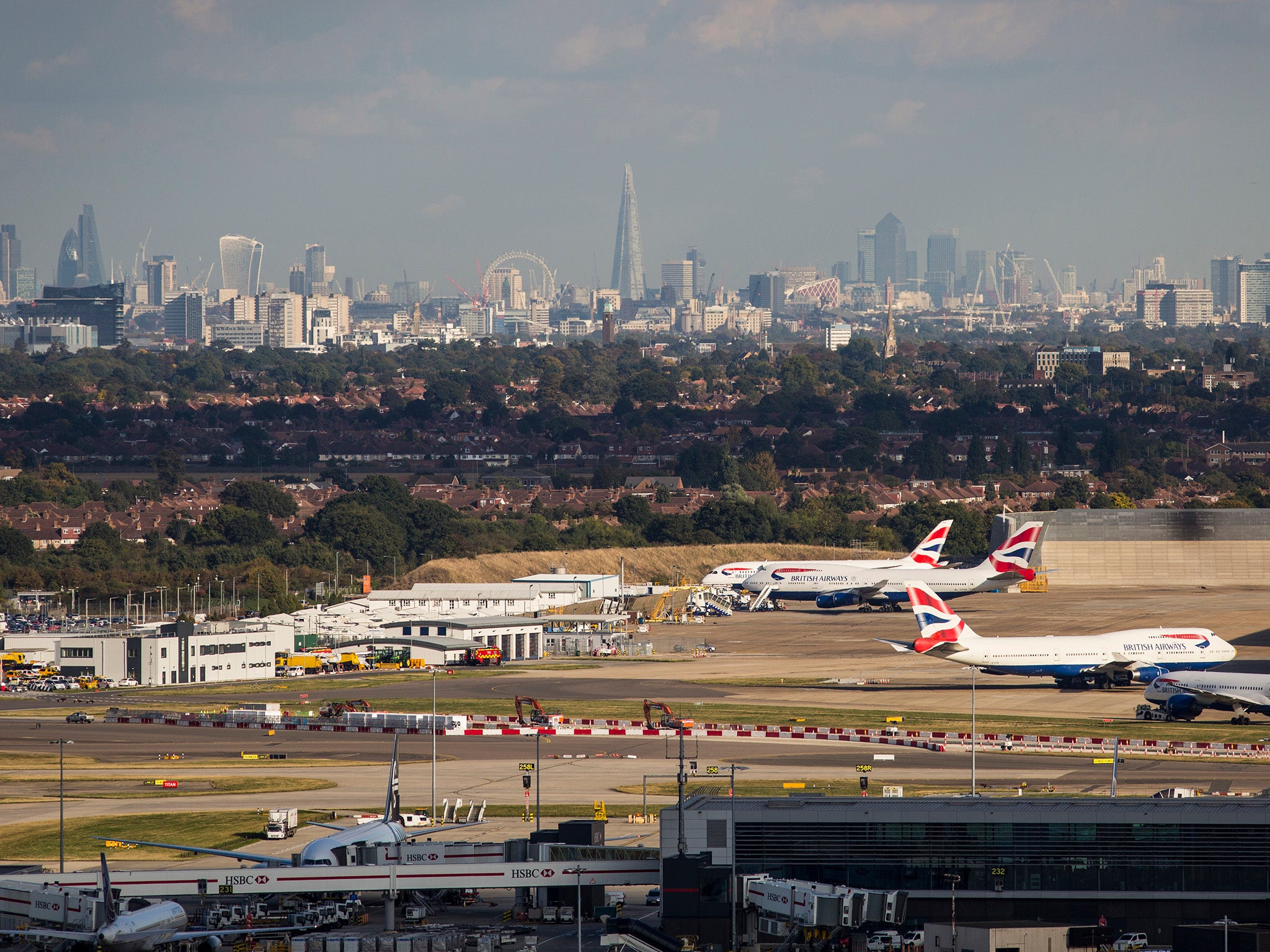Gatwick and Heathrow unite to demand government support for airport expansions
Gatwick boss warns the UK must address capacity crunch – while campaigners say further growth goes against environmental targets

Your support helps us to tell the story
From reproductive rights to climate change to Big Tech, The Independent is on the ground when the story is developing. Whether it's investigating the financials of Elon Musk's pro-Trump PAC or producing our latest documentary, 'The A Word', which shines a light on the American women fighting for reproductive rights, we know how important it is to parse out the facts from the messaging.
At such a critical moment in US history, we need reporters on the ground. Your donation allows us to keep sending journalists to speak to both sides of the story.
The Independent is trusted by Americans across the entire political spectrum. And unlike many other quality news outlets, we choose not to lock Americans out of our reporting and analysis with paywalls. We believe quality journalism should be available to everyone, paid for by those who can afford it.
Your support makes all the difference.Ministers must approve airport expansion plans or miss out on growth, the boss of Gatwick airport has warned.
In an article for The Independent, chief executive Stewart Wingate writes: “London’s airports are already reaching capacity and demand is forecast to grow by more than 30 million passengers by 2030. We are already full at peak times.”
The Gatwick CEO is seeking approval from the transport secretary, Heidi Alexander, to bring his airport’s standby runway into permanent use.
Mr Wingate echoes comments from his opposite number at Heathrow, Thomas Woldbye. At the AirlinesUK conference last month, Heathrow’s chief executive said the much-postponed plan to build a third runway was contingent on government support.
Mr Woldbye said: “This would be one of the biggest infrastructure projects in UK history, so we have to ask government, are you along for the journey? If not, we forget it.”
Read more: 14,000 jobs and £1 billion boost to the economy – why Gatwick Airport needs a second runway
In 2015, the Davies Commission recommended a third runway for Heathrow to the north of the existing pair, increasing capacity by about 50 per cent to more than 2,000 movements per day.
But a combination of the Covid pandemic, political turmoil and a prime minister – Boris Johnson – who had vowed to “lie down in front of the bulldozers” to stop expansion at Heathrow stalled plans.
More airline passengers fly in and out of London than any other city in the world. But no full-length runway has been built to serve the capital since the Second World War.
Heathrow and Gatwick are, respectively, the busiest two-runway and single-runway airports in the world.
Heathrow has been effectively full for many years, with precious take-off and landing slots traded between airlines for tens of millions of pounds. The airport expects to handle a record 84 million passengers this year. But the increase is due to larger aircraft and fewer empty seats – not extra flights.
Gatwick has little room for growth during the summer, when it is at its busiest.
“Unless we can access greater airport capacity, the UK will miss out on the economic growth that comes from increased trade, tourism and travel,” Mr Wingate writes.
Environmental campaigners have mounted a series of legal challenges to Heathrow’s third runway. Were expansion to be given the go-ahead, extra capacity would not come on stream until the early 2030s.
Gatwick airport says its more modest plan to bring the existing standby runway into permanent use will be much cheaper and less disruptive. Medium-sized Airbus A320 and Boeing 757 jets would take off from the standby strip while all arrivals and larger departing aircraft would use the current main runway.
The £2.2bn “privately financed, shovel-ready investment” could be complete by 2030 and enable capacity at the Sussex airport to rise from around 40 million to 70 million.
“With almost all of the work taking place within our existing boundaries, there should be no major disruption, and no taxpayer money spent,” Mr Wingate writes.
The Gatwick chief executive is hoping for a swift and positive response from ministers.
At the Airlines UK conference last month, the then-transport secretary, Louise Haigh, said Labour is “completely behind aviation growth” – if it is compatible with the government’s targets on net zero.
Environmental campaigners in the area surrounding Gatwick say further expansion at the airport would be extremely damaging.
Cagne, a group campaigning against expansion, says: “Adding 100,000 leisure flights a year cannot be entertained if the government is serious about reducing CO2 emissions
“It is quite unbelievable that airport expansion should even be considered, when we all know that aviation can’t decarbonise, either now or for years to come.
“We call upon the secretary of state for transport to refuse this application.”
Mr Wingate, though, believes the prospective benefits justify expansion. “Airports are catalysts for growth, supporting people and goods to travel globally, unlocking trade opportunities and supporting thousands of jobs.”
A Department for Transport spokesperson said: “We are committed to securing the long-term future of the UK’s aviation sector, and all expansion proposals must demonstrate they contribute to economic growth, while remaining in line with existing environmental obligations.”
Join our commenting forum
Join thought-provoking conversations, follow other Independent readers and see their replies
Comments